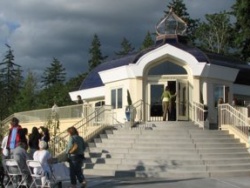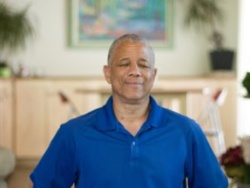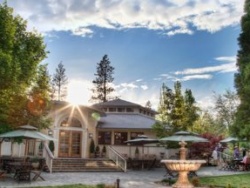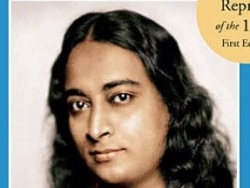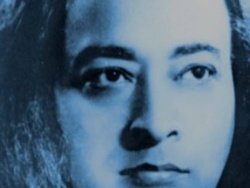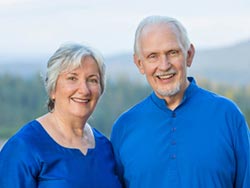

Nischala Cryer, bestselling author of The Four Stages of Yoga—How to Lead a Fulfilling Life talks about how the Four Stages can help us live more consciously, and about the Four Stages of Yoga Class she is presenting Oct. 27, as part of the Yoga and Meditation for Daily Life retreat Oct 25-28.
Q: What are the four stages of yoga?
A: They are the quintessential four “ashrams” of life, designed by the rishis of Vedic India from the higher ages. They include the Student Stage (age 0-24); the Householder (24-48); The Forest Dweller (48-72); and the Sannyasin (72-120). The great yogis and rishis designed these stages to help cure societal ills and to offer a framework for life that would be fulfilling, leading to greater happiness and harmony on our planet.
Q: Can you explain a little about the importance or significance of each stage? What are the challenges at each stage?
From a simplistic, one-dimensional standpoint, the Four Stages of Yoga are connected to the physical age of our bodies as we traverse this earth plane. In the west (and in much of the world) a huge emphasis is placed on youth, looking young and maintaining youth as long as possible. The rishis established The Four Stages of Yoga as a framework for living life more deeply, in a multi-dimensional way. During each stage, there are lessons that we focus on in our journey towards Self Realization. For instance, the First Stage of Yoga, The Student Stage, one ideally learns basic lessons like how to care for the body temple, how to understand others, how to meditate and receive wise counsel from teachers and parents who have themselves experienced the First Stage of Yoga. During the Second Stage of Yoga, one begins to blossom in unique ways—one may find a career, new adventures, meaningful relationships, marriage, or a community of like-minded souls. The Second Stage of Yoga, The Householder Stage, is a very compelling stage, and without the further understanding of yoga teachings, many may never leave this stage.
Each of the four stages offers a specific focus. During each of the four stages, the yogi strives to understand their dharma (purpose) as a soul. The Third Stage of Yoga, or Forest-Dweller Stage, is an important transition stage of life. This is when we can use introspection to design a new life. Like the phoenix rising from the ashes at the end of the householder stage, the Forest Dweller takes all their gifts from 48 years of life and begins to create their own unique contribution. The third stage requires balance and fortitude—to step back from the fast-paced life of the first two stages while accelerating forward in creative new ways. At the age of 72, one enters The Sannyasi Stage of Yoga. This can be the most powerful time of life. The Sannyasi Stage is when one’s focus is on living for Spirit completely. Sannyasis must still live in the world and serve others. Both Sannyasis and older Forest Dwellers become the “wise elders,” and their wisdom is needed by those in the first two stages of yoga. Rather than shun the elders and brush them away, or put them “out to pasture” our society needs wise elders. There is a saying “how we treat others determines how we ourselves will be treated.
The challenge that each stage of yoga presents is as unique as we are. Whereas one soul may find it challenging to understand or get along with others in The Householder Stage, other souls may find The Householder Stage easy and full of love for others.
Life itself is multi-dimensional and filled with lessons that each soul must learn. Like peeling an onion, there are layers of understanding that reveal new insights during each of these important stages.

Q: What are some of the instructive benefits of the book?
A: The book The Four Stages of Yoga uses stories, both real and fictional, that take the reader on an inner journey into the lives of yogis living in these various stages of yoga. The reader begins to experience this journey in a vicarious way, and through the stories of others, can perhaps see how they might form their own journey. Storytelling entertains us. Yet it is an influential anecdote for learning. The book is a balance of entertaining stories mixed with practical suggestions. For instance, chapters on rites of passage will be meaningful to parents, teachers and anyone working with young people. The chapter entitled “Family Yoga” offers many practical tips for families wanting to create a yogic life with their children.
Q: Is there something for everyone in this book?
A: All of us, even single people and monastics, must journey through the Four Stages of Yoga. There are many wonderful ideas for living a fuller life in the book.
Q: The book is both true stories and also fiction, can you explain why?
A: I wanted to write something that was not only instructive but also more from the heart. I believe people learn best through stories. So, I did something that wasn’t easy. I began to write about events in my own life that related to the four stages of yoga. Gradually, the book began to reveal itself. Since I’m only in the Forest Dweller Stage of Yoga, I needed help from other, perhaps wiser souls. I also added a few fiction stories to explain important remedies for the four stages of yoga.
The true stories are drawn from my own life experiences living in various yogic spiritual communities over the past 33 years. I love people and I’m naturally curious. My early years as a journalist taught me to ask questions, so I’ve been gathering some of this material a long time. Very early on I met Mother Teresa in Calcutta in 1987. Seeing her and talking with her changed me. Again in 2005 our college study abroad was invited to have a private audience with His Holiness The Dalai Lama at his home in India. I write about both these experiences in the book as they relate to the various stages of yoga. Many of the stories come from living at Ananda Village, visiting Ananda Europa community in Italy, and many visits to India.
Q. Can you tell us about the Four Stages of Yoga Class that you will lead Oct. 27th?
A. We’ll examine the four stages of yoga and then look at how they can help us and others to lead more fulfilling lives. It will be an opportunity to begin to understand and create your unique dharma for your particular stage of life. We’ll explore yogic tools and creative activities to help you achieve your goals.
Q. What are the types of things that hold us back from finding our dharma?
A. Often I hear from younger people in The Student Stage (ages 0-24) that they don’t yet know what they want to do with their lives. Those in the Householder Stage of Yoga (ages 24-48) often seem overwhelmed with life and want to do more. I also have heard from people in The Forest Dweller Stage of Yoga (ages 48-72) or the Sannyasi Stage of Yoga (ages 72-120) that they lack direction in their lives. Unfortunately, our society places a premium on youth. The rishis proclaim that the last two stages of life (yoga) are actually the most powerful time of life. This class will help you begin to discover a clearer, more fulfilling path towards finding your true dharma. For all ages.
Learn more about the Yoga and Meditation for Daily Life retreat Oct 25-28.

Nischala Cryer is the co-founder of Ananda University. A former journalist and award-winning creative director, she is the author of the Amazon bestselling book, “The Four Stages of Yoga, How to Lead a Fulfilling Life,” and “Reflections on Living 30 Years in a Spiritual Community.” She lives with her family at The Ananda Meditation Retreat in the Sierra Nevada Mountains outside of Nevada City, California.

